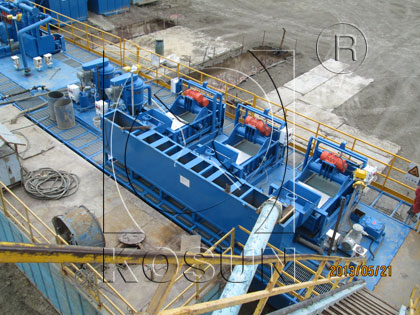Jan 05, 2015
Drilling fluids design is of great importance for drilling engineering design, mainly determined by lithology, strata pressure, pshysicochemical properties of shale formation,formation fluid, cross section of formation pressure(pore pressure, collapse pressure and fracture pressure), geothermal gradient, etc.; and restrainted by reservior protection requirements, complication in completion wells of local and neighboring blocks and drilling fluids application, geographical and drilling engineering requirements, relevant drilling mud technologies and techniques, state and regional environmental regulations.
1. It should be done on drilling geological design, drilling engineering design, other relevant materials as well as concerned technological standards, regulations and norms.
2. After analysis of influential elements to exploration safety quality and economic benefits, some drilling fluids technological measures should be drawn out.

1. Complication analysis in neighboring wellbore and complication prediction of the well in question;
2. Types, major parameters and basic ingredients of drilling fluids for different depths;
3. Material planning and capital budget of drilling fluids for different depths;
4. Mud consumption prediction;
5. Reservior protection requirements;
6. mud circulating system configuration and application requirements;
7. Requirements on mud testing apparatus’s configuration;
8. Drilling fluids concoction and management;
9. Requirements on contingency materials and kill fluids reserves;
10. Prediction and dealing of borehole complications;
11. Requirements on HSE management.
The drilling fluid system—commonly known as the “mud system”—is the single component of the well-construction process that remains in contact with the wellbore throughout the entire drilling operation. Drilling fluid systems are designed and formulated to perform efficiently under expected wellbore conditions. Advances in drilling-fluid technology have made it possible to implement a cost-effective, fit-for-purpose system for each interval in the well-construction process.
Effective drilling mud solids control system can be attributed to the overall performance of all the components of drilling mud systems. Conditioning the drilling fluids with the goal of dramatically lowering maintenance cost, avoiding excessive chemical treatment and maintaining mud systems volume will decrease the chance of equipment failure, unnecessary high mud costs. Usually, there are five stage solids control equipment including drilling mud shale shaker, vacuum degasser, desander, desilter, and decanter centrifuge. Besides, effective performance of the whole system can not be achieved without the assistance of auxiliary equipment including mud gas separator, centrifugal pump, jet mud mixer, mud agitator, mud gun and mud tank.